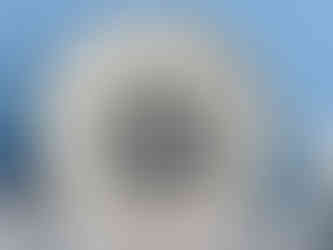Search
It's black and white
- willa
- Nov 29, 2024
- 3 min read
Hello dear readers! I've been taking it easy after some (non-serious) surgery, and am taking the liberty of showing another blog from a while ago... and after this I will be back with new stories and treasures.
A while ago, I came across a wonderful little matched tea service that has a lot of history.
The oldest items of this cool little tea service, which is in good usable condition, are the little cup and saucer and the milk jug with a cover. The cup is actually a coffee cup. They were made by Worcester in its First Period, around 1760. They are decorated with two versions of the "Tea Party" pattern in an overglaze black print, designed by Robert Hancock. Hancock brought the technique of printing to Worcester, which allowed the factory to produce fantastically detailed images at a very low cost.
In the Rococo period in the 18th Century it became fashionable among young people to take tea or coffee together and hang out in beautiful gardens or rooms. The young nobility was fed up with the strict protocols of the courts and grand houses where they had grown up, and rebelled by having some fun. There are lots of romantic and even amorous scenes from that period.
The Tea Party was a very popular one. It was done in three versions. On the cup and saucer you see version 2, which is the rarest; a lady and gentleman having tea in the garden. The gentleman is drinking coffee from a coffee cup, with a silver coffee pot in front of him on the table. The lady is holding a teacup in her right hand, with a tiny teapot on the table. And what is the lady holding in her left hand under the table - is it the saucer, or is it a treat for the dog, who is patiently waiting in the foreground? On the reverse of the cup is the maid walking with a young servant who is holding the kettle with hot water, presumably to deliver a top-up to the tea party. They are chatting away.
On the milk jug you see the 3rd version of the Tea Party pattern; a lady and gentleman now seated on a love seat, in conversation, the gentleman gesticulating with his hands and the lady offering tea. A little dog is running around in the foreground. Again on the reverse are the maid and the young boy. The cover of this milk jug has the characteristic floral finial, and adorable detail.
The teapot, sucrier and plate are from a later period: the Flight period. Made probably around 1790, you can tell from the generous size of the teapot that this was after the import duties on tea were cut, making tea much more affordable. These items are printed with the "Ruins" pattern, again in slightly different versions. This was another pattern from Hancock that was very popular from about 1760 onwards. This was, of course, the time of the "Grand Tour', when every respectable young lad would spend a year or two travelling in Europe and educating themselves on the Classics in Italy and Greece. You see imposing ruins with statues, and most images also have some figures in the foreground, either travellers or young lads sketching out the scenery.
These patterns are the height of Rococo and Neoclassicism, when taking tea and talking about the Classics became very popular. There is incredible detail in the prints; you would never be able to paint that with a brush. So I imagine that people would look very carefully and try to identify what was going on in the images, just as we do now... not your usual IKEA cuppa!
These wonderful items are in my shop, as well as the beautiful pair of Minton white biscuit figures of gardeners. I am selling the teaware grouped by the pattern but of course they make a wonderful little service together.
Where to find things
You can find all my available stock here. If you always want to see the latest additions, follow me on Instagram... I post pictures and a story several times a week.
Happy weekend, and have a tea party! 🫖
This week's new treasures:
















































































Comments